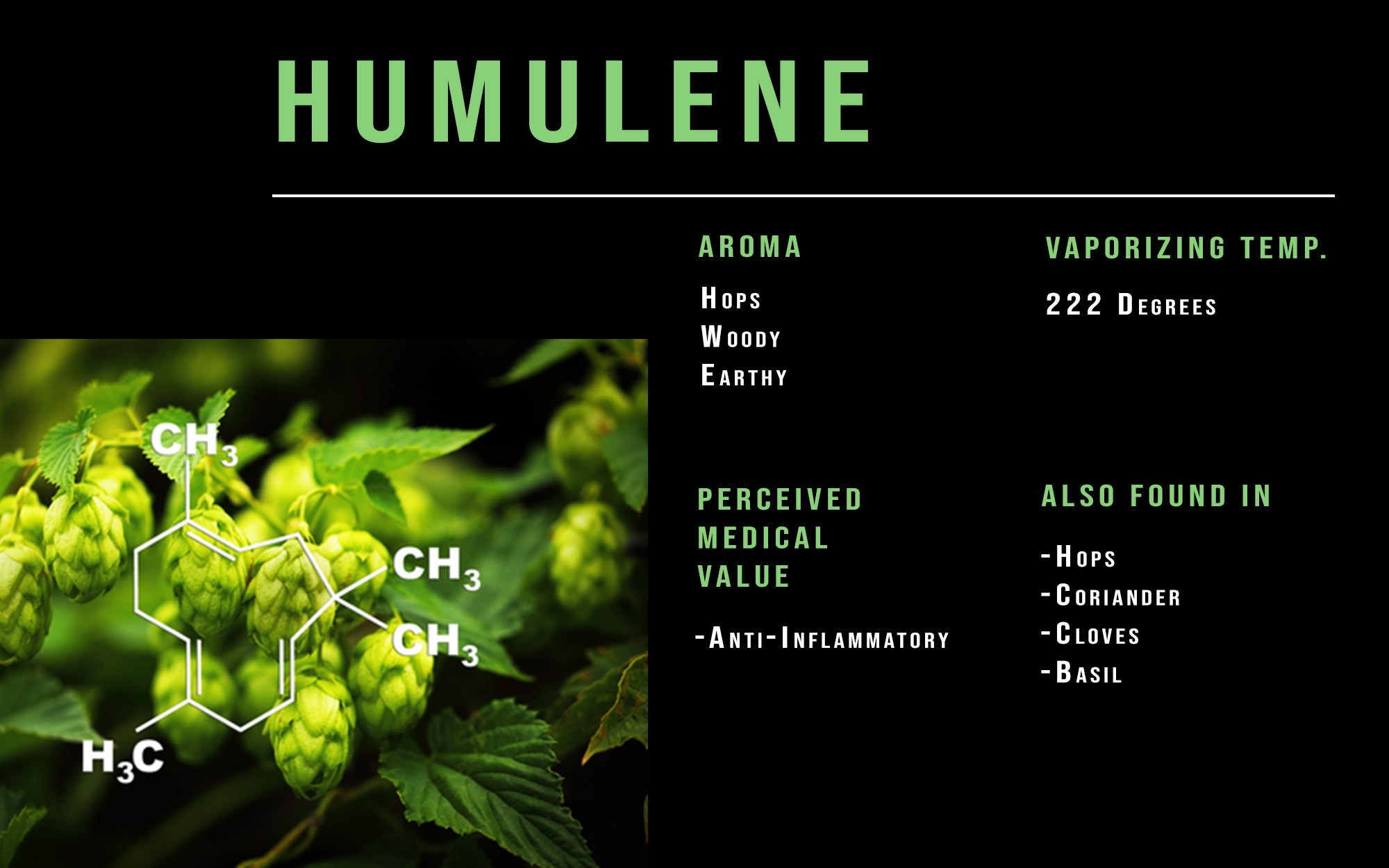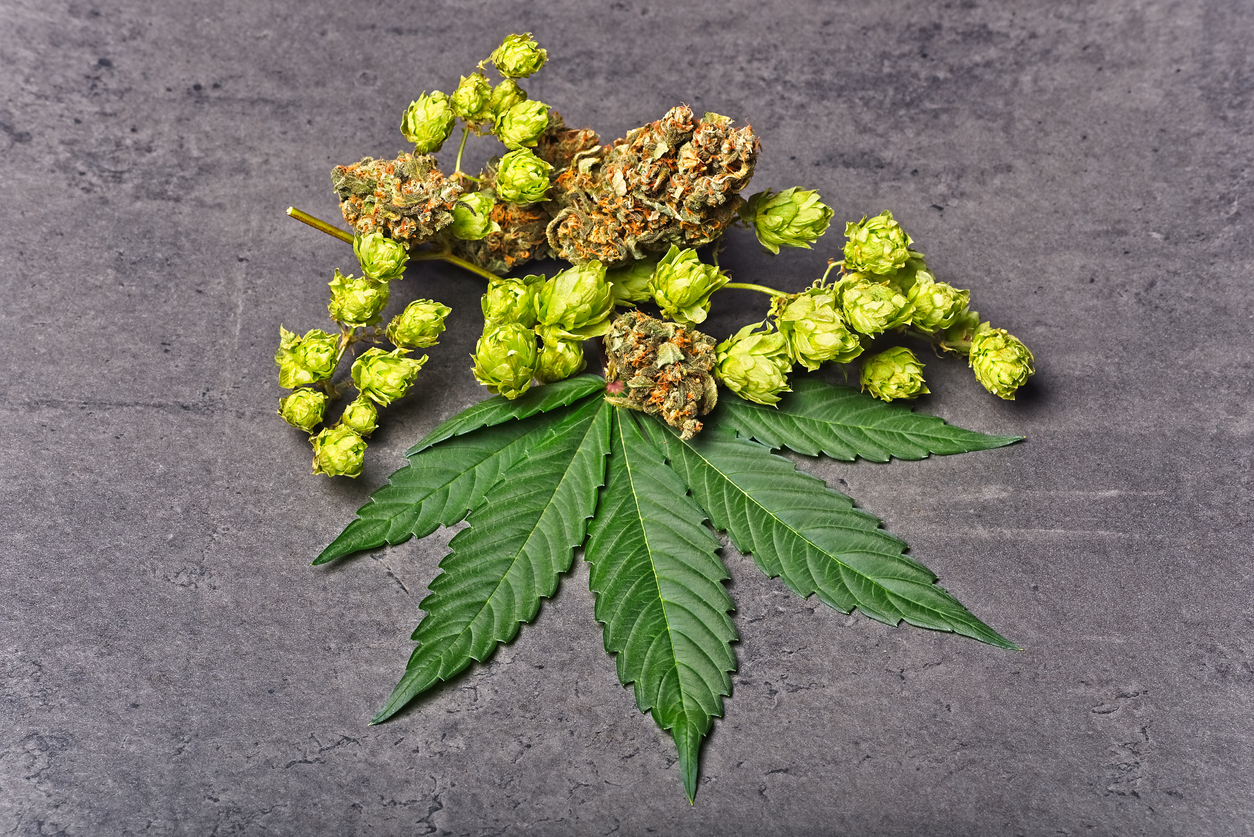#KahliBuds #MMJ #CBD #THC
Hops and weed are so closely related to one another, they’re basically cousins. Both plants belong to the Cannabacae family, and both share some biochemistry in common. One of the compounds found in both weed and hops is humulene, a terpenoid molecule known for its earthy, spicy qualities.

What Can Humulene Do, Exactly?
Humulene is one part of cannabis that scientists have studied for quite some time (unlike, say, THC, which comes with a lot of restrictions for researchers). Humulene’s most notable property is its ability to fight cancer and kill tumor cells, though it also possesses anti-inflammatory effects and can act as a natural pesticide and antibiotic, too.
Humulene’s anticancer powers may partially explain why whole-plant cannabis extracts are more effective at killing tumor cells than THC or CBD alone. Studies show that humulene can slow the growth of or even destroy cancer cells that start in the liver, the colon, the skin, the prostate, the lungs, and the breasts.
Humulene confers anti-inflammatory properties, too. By curbing inflammation, the terpene can control chronic pain, treat some allergic reactions, prevent premature aging, and help prevent the formations of certain tumor types.
On top of all that medicinal bad-assery, humulene can work as a natural product to fight against bacterial infections. And it’s not just microscopic bugs that hate the terpene. Many insects also can’t stand it, meaning it can serve as a natural pesticide, as well. In fact, humulene’s antibacterial and anti-pest powers may explain why so many different kinds of plants evolved to produce it.
What Weed Strains Contain Humulene?
If you want to pump up your humulene intake, there are some weed strains known to produce more amounts of this terpene over others. Keep in mind that a plant’s genetics only partially contribute to any terpene’s content. The plant’s grow conditions, feed type, and feeding schedules also play a big role.
According to the lab data at Leafly, these weed strains consistently feature humulene as their third most prominent terpene: Death Star, Headband, Thin Mint GSC (aka Thin Mint Girl Scout Cookies), Original Glue (aka Gorilla Glue or GG4), and Candyland. Royal Queen Seeds lists the classic strains White Widow, Sour Diesel, and OG Kush as additional flower varieties that pack ample amounts of humulene.
Since new hybrid strains hit the legal weed markets every few months, check the labels on your bud containers. Many labels feature the lab test data for that batch, and may list the terpenoid contents, as well. Just look for “humulene” and see if it’s listed at greater than 0.0 percent.
If your pot shop doesn’t include terpene contents on the labels, you can also train your nose to sniff out humulene. The terpene usually presents as an earthy, woody, slightly spicy aroma with subtle hints of citrus for especially sensitive schnozzes. Basically, humulene smells a bit like many well-crafted, microbrewed beers.

What Other Plants Produce Humulene?
As mentioned earlier, weed and hops aren’t the only two plants that produce humulene. The terpene can also be found in more common plants, herbs, and spices such as ginseng, cardamom, basil, cinnamon, juniper, echinacea, tea leaves, oranges, mandarins, tangerines, coriander, black pepper, sage, currants, saffron, and sunflower, to name a few.
Basically, you can get your daily dose of humulene from good weed. But you can also get humulene from simply maintaining a balanced diet with a variety of herbs, fruits, vegetables, and natural spices, too.
So, toke up, stay heady, and keep healthy!
Follow Randy Robinson on Twitter, Instagram, and Facebook
420GrowLife
via www.KahliBuds.com
Randy Robinson, KahliBuds, 420GrowLife
- Share:

0 comments